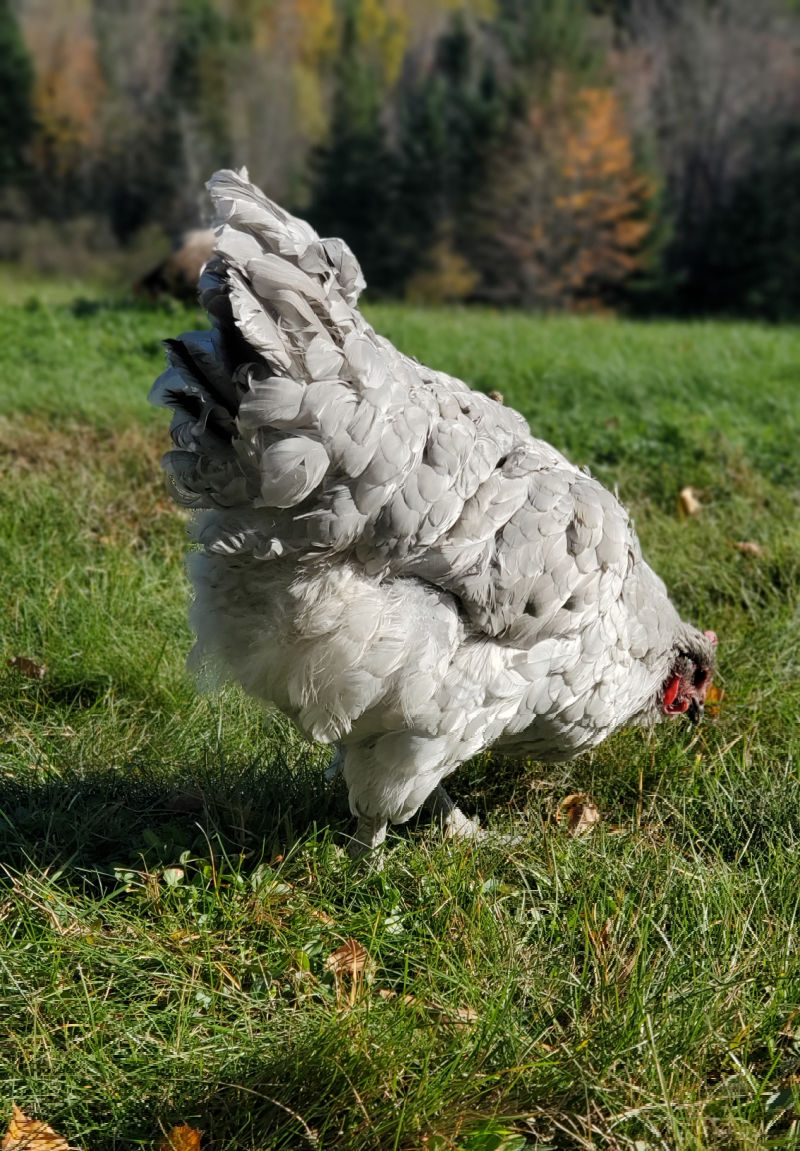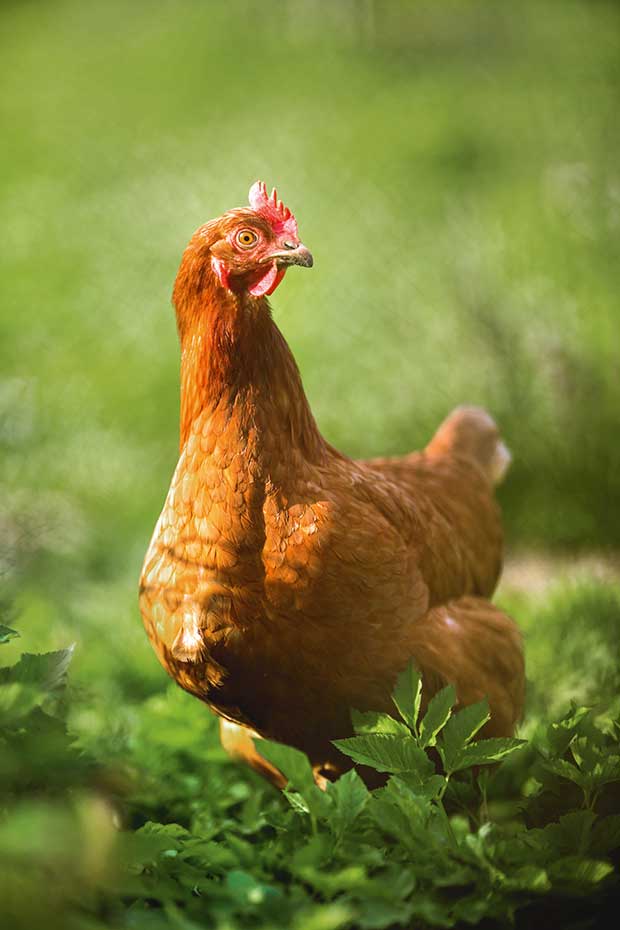
Gapeworm in chickens YouTube
Gapeworm is common in pheasants but also affects chickens, guinea fowl and turkeys. Gapeworms can cause considerable losses in pheasants and turkeys. Gasping for breath or 'gaping' as it is known is the biggest sign of gapeworm. Shaking of the head and neck stretching are also common. When birds are held, gurgling can often be heard which.
Could this be eye worm??? Gapeworm??! Resp infection??! Help! BackYard Chickens Learn How to
Gapeworm and Chicken Respiratory Disease (CRD) have very similar symptoms but require entirely different treatment. Symptoms of gapeworm. Gapeworm (Syngamus trachea) is a parasitic infection of thin, red worms which live in the trachea, and sometimes the bronchi or lungs, of birds. They can affect chickens but are more common in turkeys.

Gapeworm, Earthworms + Backyard Chickens Fresh Eggs Daily® with Lisa Steele
The gapeworm, Syngamus trachea, is a parasitic nematode found in the trachea of domestic and wild birds worldwide. S. trachea are tiny, bright red (caused by ingestion of the host's blood), worms that have a 'y'-shaped appearance (which are actually two worms, the male and female---that are joined together, with the male acting as an anchor for the female). These worms attach themselves to the.

The Chicken Chick® Answers from The Chicken Vet on WORMING
About Gapeworms. Gapeworms are parasitic worms that infect the trachea and lungs of chickens. They are also known as Syngamus trachea and are typically found in wild birds like pheasants and turkeys. These thin red worms range from 1-2 inches long and cause their hosts to experience severe respiratory distress.

Is your chicken gasping for air? It could mean it has gapeworms
This process takes around 7 days, gape worm lay eggs that get coughed up onto the ground or swallowed and passed out in the faeces. Signs and Symptoms. Signs and Symptoms relating an infestation causes respiratory distress. Gasping for breath or 'gaping' as it is known is the biggest sign of gape worm. Shaking of the head and neck stretching.

How to treat Gapeworm Chicken choking Animal health YouTube
If you want a topical get Ivermectin pour on (5 mg/ml) and apply 4 drops (0.2 ml) to the base of the neck and repeat in two weeks. If you use the 1% injectable inject 0.1 ml sq per chicken. If you use the sheep oral drench (0.08%) give 0.125 ml by mouth. Gapeworm is very hardy and will remain viable in the soil for more than four years.

Chicken yawning with gapeworm YouTube
Chickens get infected when they ingest parasite eggs. This can be via contaminated food, earthworms, or insects carrying the parasite. 4. Gapeworms (Syngamus trachea) Gapeworms (aka red worms, forked worms) are common Y-shaped parasites that live in the windpipe of chickens, where they cause breathing problems. They can reach up to 13 inches.
Help me SAVE my chicken who I think has Gapeworm Page 2
Chickens can acquire a surprising number of different types of parasites. Perhaps one of the most difficult types of internal parasites to detect in your poultry is the gape worm (or gapeworm, both are correct). It is a worm-type parasite that lives in the mucosal lining of the trachea (windpipe) of chickens, pheasants, turkeys and guinea fowl.

Chicken with Gapeworm YouTube
Dosage for paste version: place a pea-sized dollop in beak or inside a piece of bread. Repeat treatment in 10 days. Ivermectin pour-on, applied to the back of chicken's neck; 1 drop for tiny chickens, 3 drops for bantams, 4 for lightweight birds, 5 for large birds and 6 for heavy breeds. Repeat treatment in 14 days.

Sick Chicken with Gapeworm...? YouTube
Gapeworm symptoms in chickens include gasping and coughing…However, this does not always mean that your bird is infected.Your chickens might also be making funny rasping noises, gasping for breath, and shaking their head.Gapeworm is very common Gapeworm symptoms in chickens include: Gasping , loss of appetite, yawning, respiratory distress.

Control & Treatment of Worms in Chickens The Chicken Chick®
Chickens might start to wheeze, and their breaths could become labored. You may observe an apparent physical struggle for each breath in severe cases. The severity of these symptoms directly corresponds with the extent of the gapeworm infestation. If you notice any of these signs, it's essential to act swiftly. 2.

Gapeworm in chicks? More in comments BackYardChickens
Weigh your bird, then work out a dose and add it to drinking water. In this instance, for treating gapeworm, it's important to use Flubenol or Aviverm as they contain the chemical levamisol which works to kill the adult worms. Ivermectin-based products will not kill adult gapeworms.

What is gapeworm? The Good Life Backyard
Quote: Also I have seen gaping when it was a respiratory problem (aspergillosis). Gaping doesn't necessarily mean gapeworm as dawg53 said. I have never dealt with gapeworm. This could definitely be a respiratory disease (I don't have the knowledge to say it isn't gapeworm but wanted to chime in that gaping is seen with respiratory ailments also).
Gapeworm? Open mouth in roost. BackYard Chickens Learn How to Raise Chickens
Gapeworms in a chicken's trachea can lead to severe respiratory distress. A high-pitched wheezing or gasping sound often characterizes it. This is commonly called 'gaping,' hence the name gapeworm. However, regular deworming, maintaining clean coops, and limiting contact with wild birds are all crucial steps in keeping your flock gapeworm.

Should I Be Worming My Chickens? Appletons
Diagnosing gapeworm infection in chickens can be tricky, as symptoms can overlap with other respiratory diseases. The most reliable way to diagnose gapeworms is by taking your bird to a veterinarian who can perform a thorough examination and run a lab test. Your vet may also do a fecal exam to check for the presence of gapeworm eggs.

Gape Worm Infection In Poultry Chickens have a wide variety of parasites, including the gape
Gapeworm is a parasitic infection caused by thin, red worms that reside in the trachea (windpipe) and lungs of infected birds, and feed on blood. Also called Syngamus trachea, this disease is commonly found in turkeys. However, it can also found in chickens, especially the younger ones because they have smaller trachea.